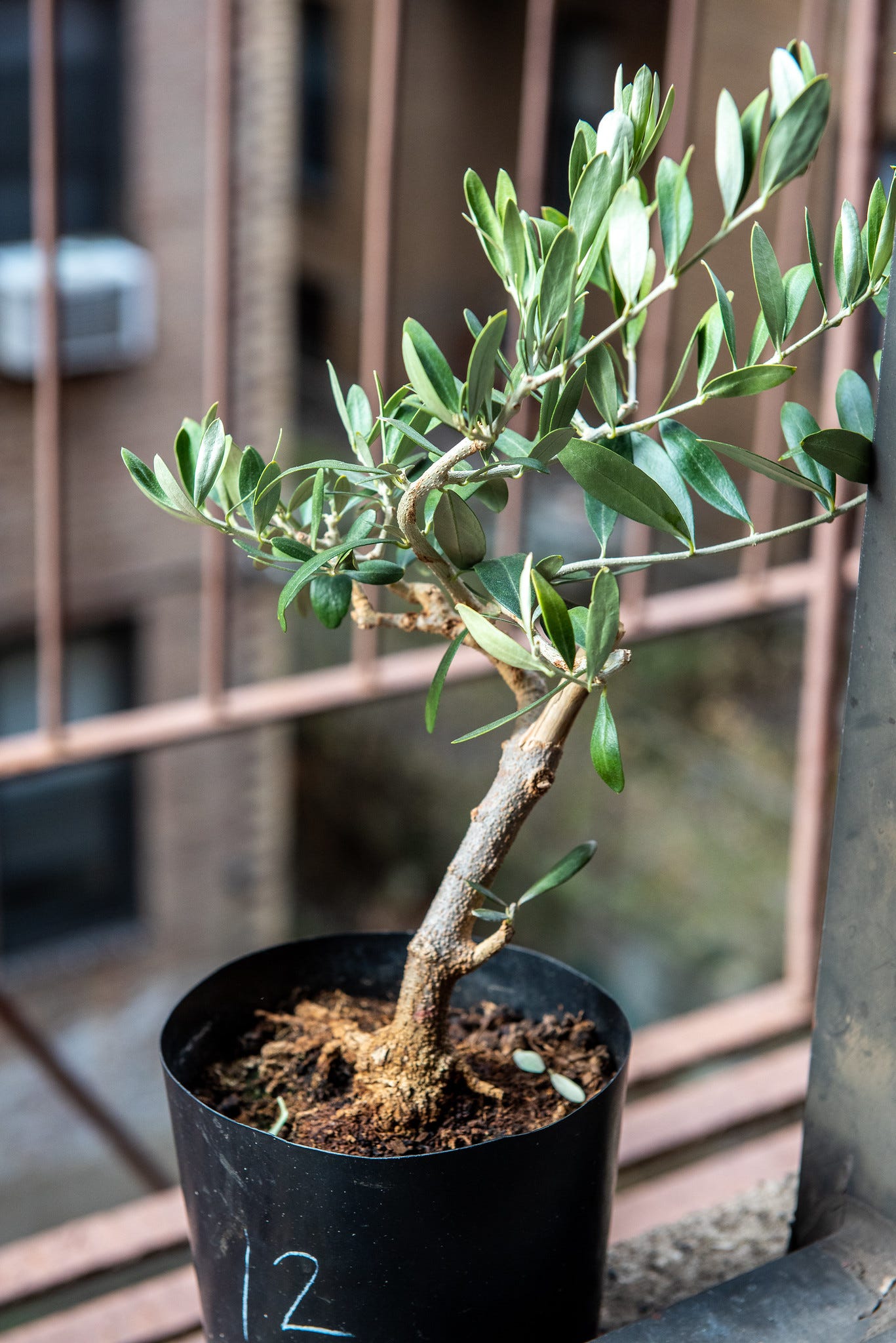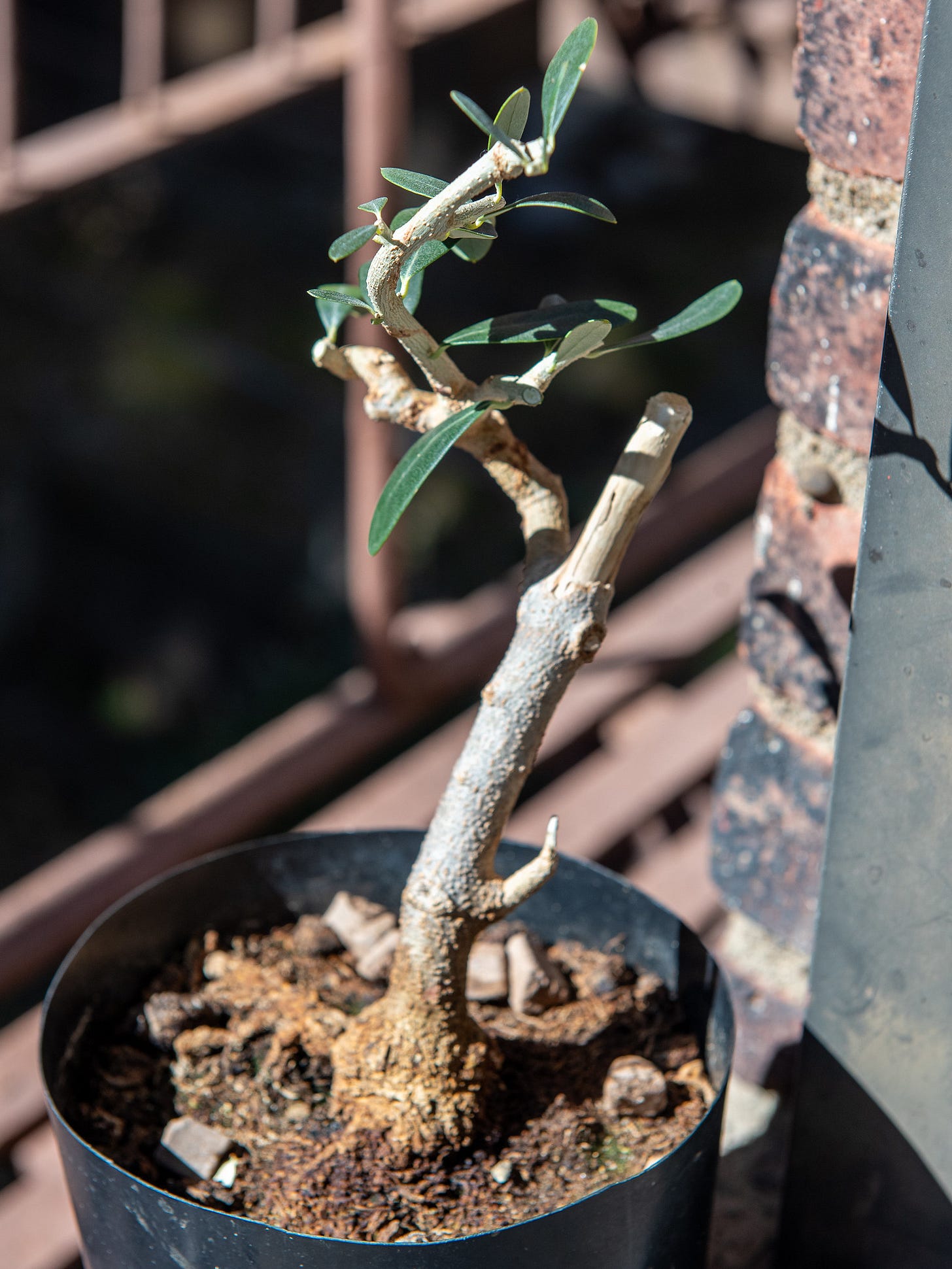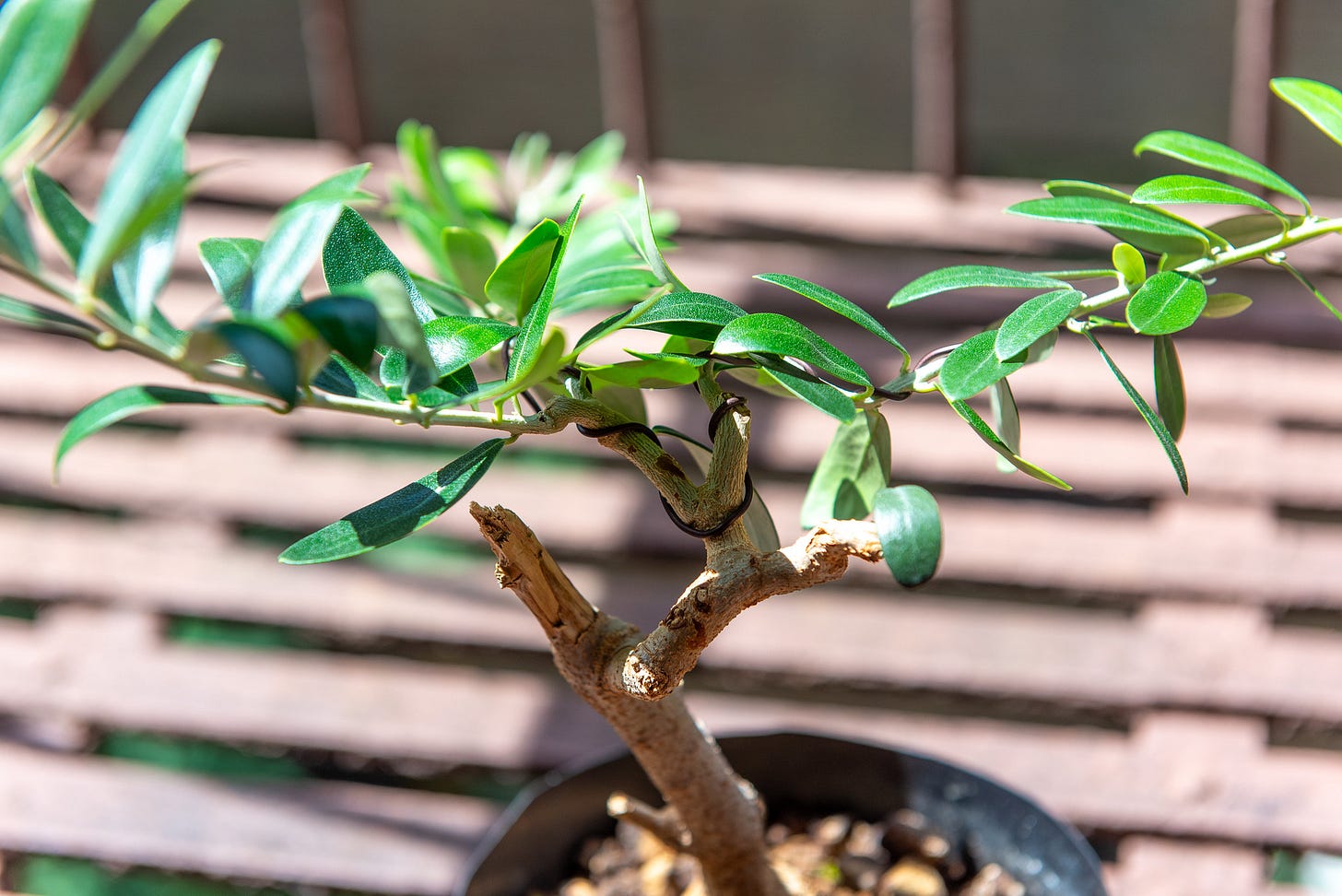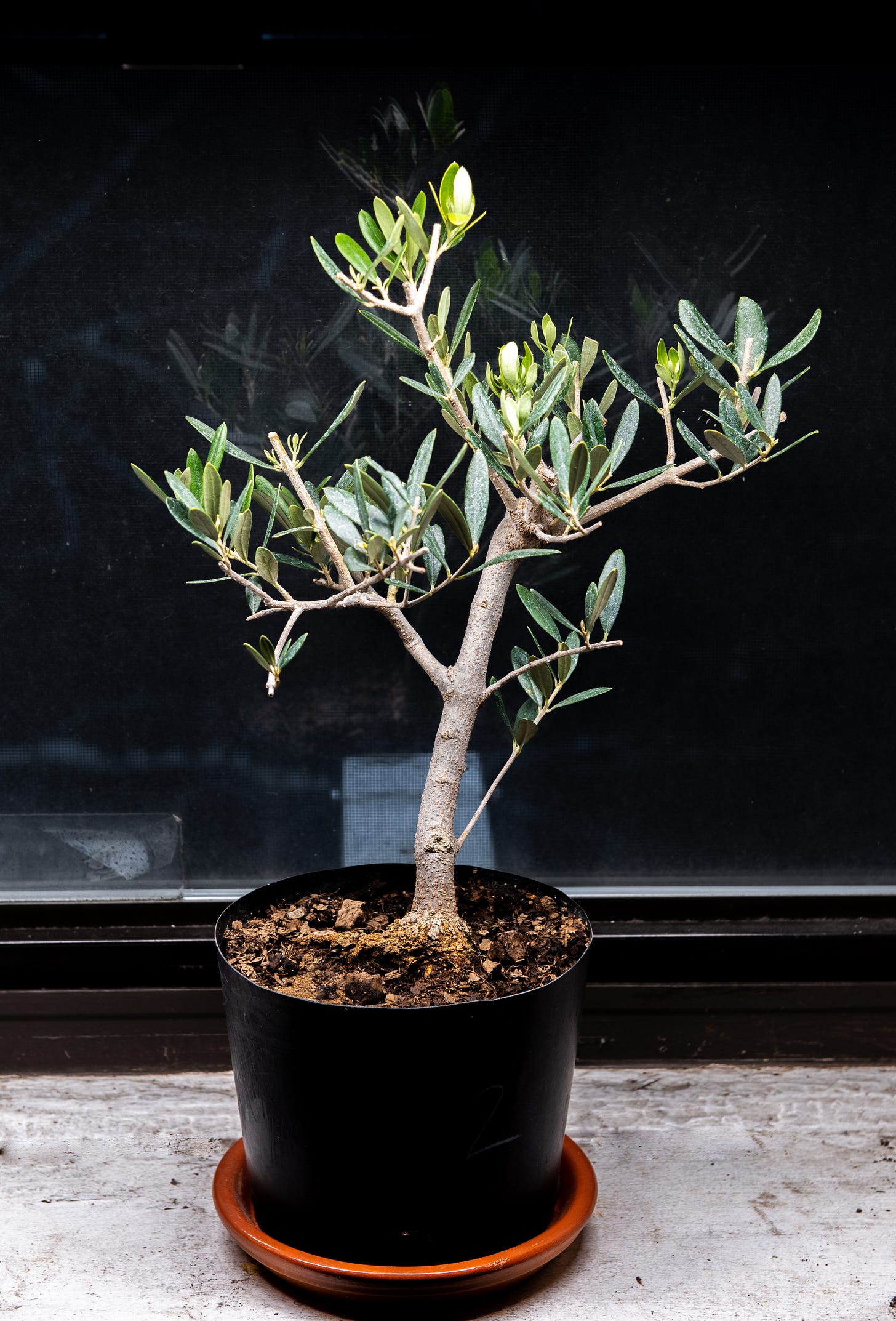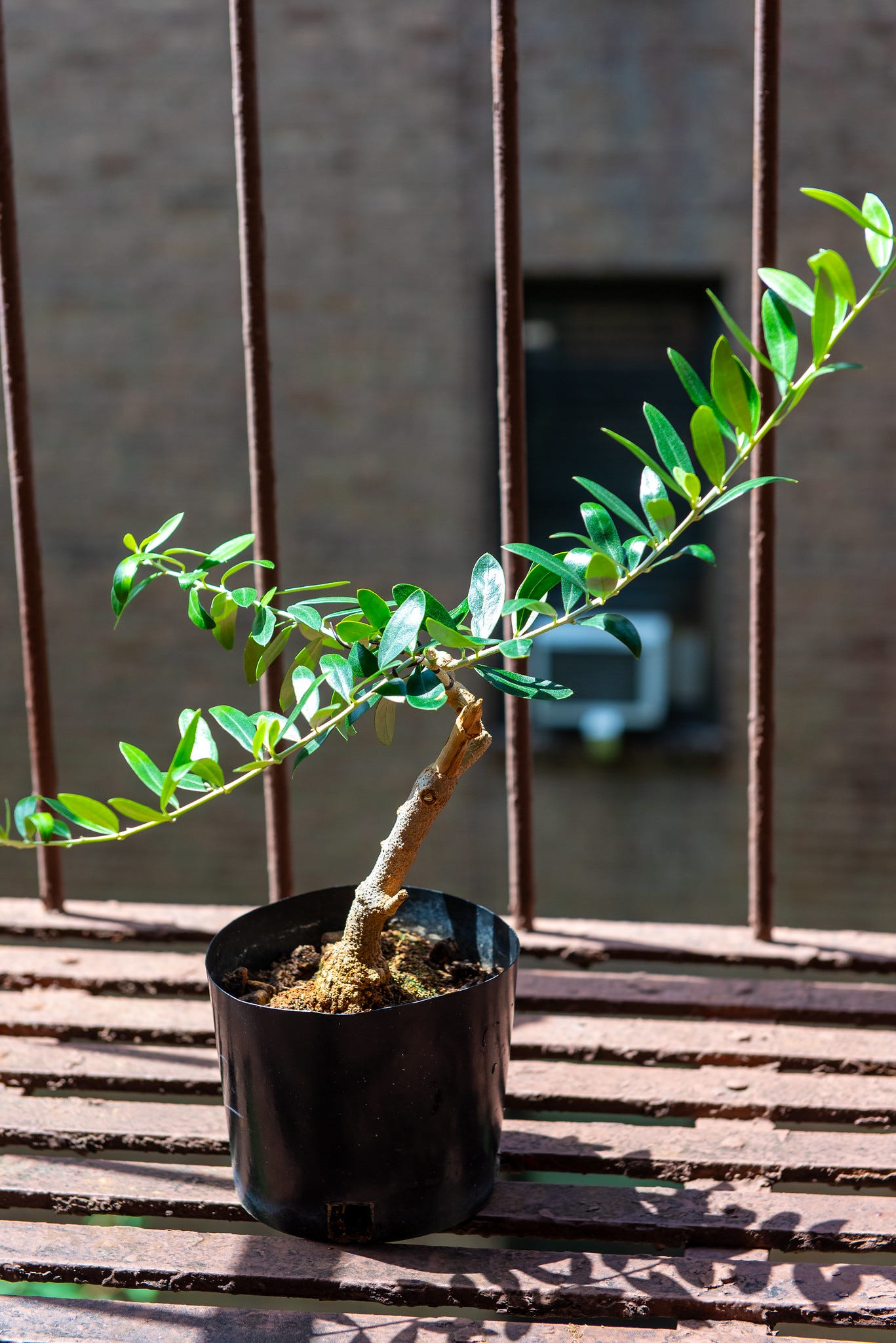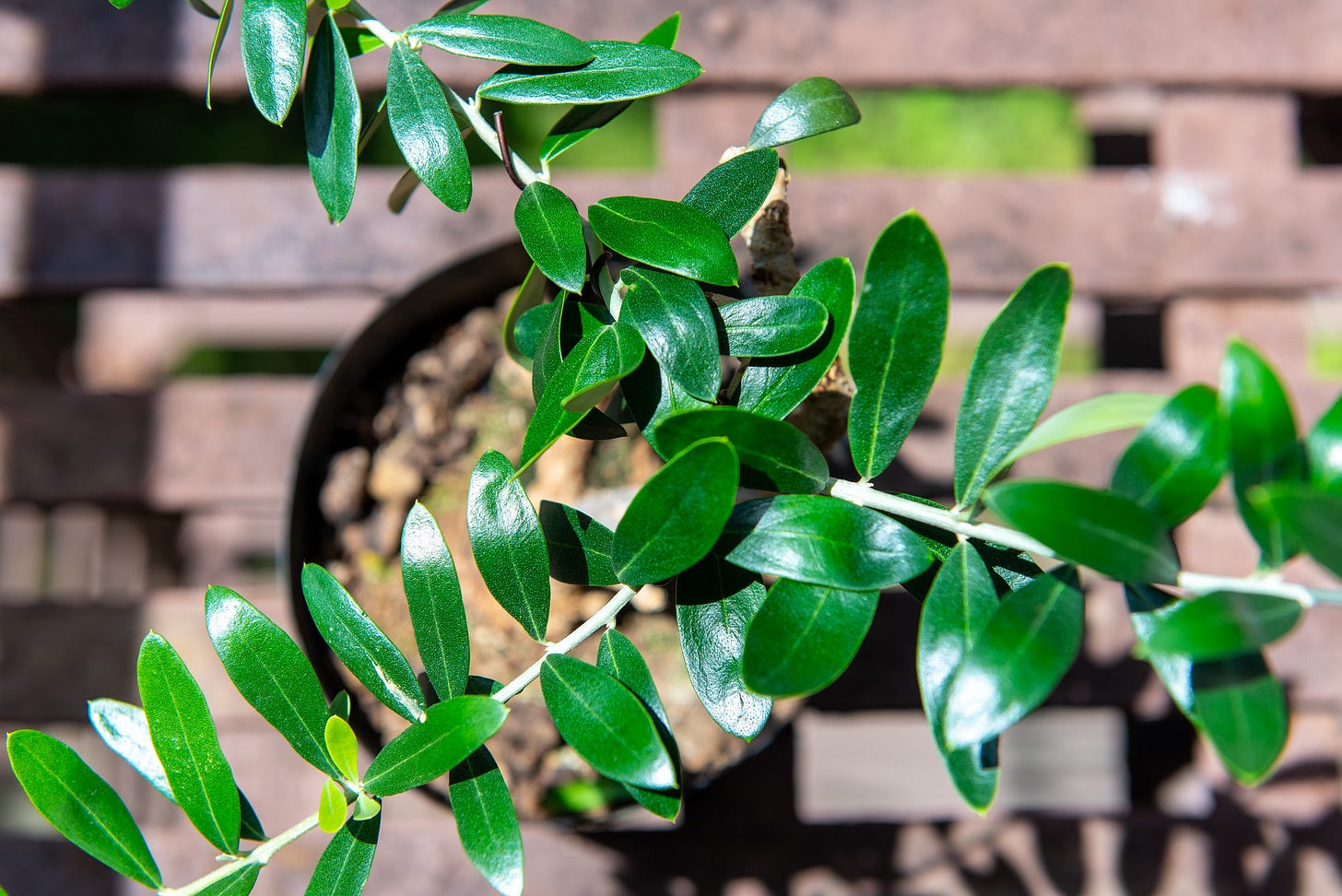It’s good to start over
The comparative merits of sculpting and reduction techniques.
At the beginning of the year, my olive tree looked like the photo above. There have been some changes.
First I cut all the branches back to a single pair of leaves.
I wasn’t wild about it. Even slimmed down, the trunkline looked top heavy. At one point I carelessly snapped a critical shoot and used the accident as an excuse to cut back further.
Here you can see the three remaining shoots, as well as some carving I did on the original trunk to make it look like it fractured in a storm.
I wired the two parallel branches to make them grow in opposite directions.
It’s all that’s left of a tree that looked like this in January.
Sometimes it’s good to start over.
Every pursuit has its dead ends, where the only way forward is to turn backward. Trees face dead ends all the time, and exhibit inspiring capacities for regeneration. Chop down a 20-year-old willow and dozens of branches will shoot out from the stump. If you wait 10 years and then harvest the new shoots for firewood or basketweaving, the stump will put out more young shoots the following spring. This is a technique called coppicing, an ancient method for harvesting lots of straight, thin lengths of wood from a tree while keeping it alive. A well maintained coppice can be kept in a state of perpetual youth, surviving for centuries purely on juvenile growth.
Trees make metabolic judgement calls that require them to start over all the time. Commercial blueberry growers can expect a bush to survive about 100 years before the root system decides the old growth isn’t productive enough to be worth the trouble. To survive the next hundred years, it’ll sprout new trunks from its roots and slowly starve the old trunk of sugars until it dies.
When you’re rooted in one place, the only form of movement is regrowth.
Some bonsai techniques involve sculpting a tree into the form you want it to take. We shape trunks and branches with wire, which holds the shoots in place until new growth hardens them into position. Most of my work on this tree has been sculpting: giving shape to a vision with wire and directional pruning. Except once that young wood sets in place, I don’t seem that happy with the results, or with the growth that comes after.
So I want to change tactics and focus on reduction techniques instead. Reductions are like coppicing: grow a tree out, then cut it back to almost nothing, to make organic-looking incremental changes in the trunk’s movement. Reductions are often a leap of faith. Until you make the chop, you can’t be certain which epicormic buds will activate or how the new growth will look. With a freshly wired trunk you can sit back and admire your handiwork as you imagine the tree’s future. A newly chopped trunk looks like a stump.
This is two months of growth on my water jasmine after a trunk. Two groups of branches emerge from the chop and one larger group shoots off the trunk lower down.
I braided the shoots together to introduce kinks and curves, then loosely wrapped and shaped them with wire. I want to try fusing the individual shoots into branches, which will help me sculpt the structure of the tree more quickly. But even with sculpting techniques, uncertainty is inevitable. It just takes longer to appear.
The next step both for my olive and water jasmine is to grow uninterrupted for the next few months. Then I’ll reassess and see what they need next. I can only set the plans in motion. The trees have to carry them out.
Tree reading
Wildfires fueled by climate change in Maui have killed at least eight people, and threaten the much beloved Lahaina banyan tree, which was planted in 1837. You can support wildfire relief efforts by donating to the Hawai’i Community Foundation. [Associated Press]
A darling profile of the Oaxacan restaurant cook who tends the bonsai collection at the renowned Yamaguchi Nursery. [Los Angeles Times]

